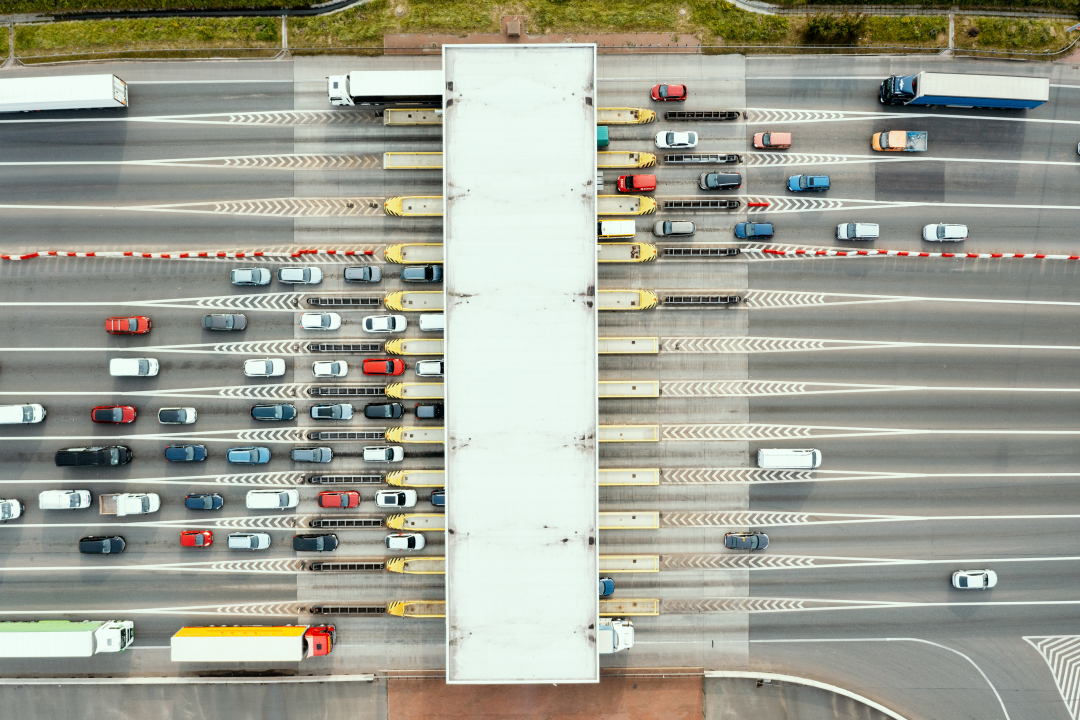
Guest
L'impact de la panne d'électricité dans la péninsule ibérique en 2025 sur le transport routier de marchandises
Créée: 04/06/2025
•
Mise à jour : 04/06/2025
Le 28 avril 2025, une panne de courant généralisée a frappé la péninsule ibérique, privant d'électricité des millions de foyers, d'entreprises et de services publics en Espagne et au Portugal. La panne d'électricité en Espagne et au Portugal, qui a commencé à 12 h 33, heure locale, a touché les grandes villes comme Madrid, Barcelone, Lisbonne et Porto, ainsi qu'une grande partie des régions environnantes. Dans certaines zones, le courant a été rétabli en quatre à six heures ; dans d'autres, les perturbations ont duré jusqu'au lendemain matin.
Bien que la cause précise soit toujours en cours d'investigation, les premiers rapports suggèrent qu'une défaillance dans le réseau de transmission transfrontalier a perturbé le flux d'électricité à travers les deux réseaux nationaux. L'impact a été rapide et généralisé, interrompant les services ferroviaires, clouant les avions au sol, affectant les hôpitaux et les services publics et paralysant l'infrastructure numérique. Pour le secteur des transports et de la logistique, le défi a été immédiat, touchant tous les aspects des opérations routières, de l'approvisionnement en marchandises et en carburant au contrôle du trafic et au bien-être des conducteurs.
"Lorsque l'électricité tombe en panne, il en va de même pour de nombreux systèmes dont nous dépendons pour assurer la sécurité des routes, qu'il s'agisse des feux de circulation, de la signalisation ou des communications", explique Raquel Martinez, directrice des ventes européennes chez SNAP. "Pour les conducteurs et les opérateurs de flotte, la panne de 2025 a mis en évidence la rapidité avec laquelle les trajets de routine peuvent devenir à haut risque et l'importance de savoir où les conducteurs peuvent s'arrêter pour assurer leur sécurité et celle de leur chargement.
Retards de fret
Pour les entreprises de transport, le premier problème, et le plus urgent, a été la suspension du transport de marchandises. Dans toute la péninsule ibérique, les activités des entrepôts, des centres d'exécution et des plates-formes de transbordement ont ralenti ou se sont complètement arrêtées. Les mouvements internationaux ont également été affectés, les camions étant retenus aux frontières pendant que les autorités s'efforçaient de rétablir un contrôle de base du trafic et d'assurer la sécurité routière.
Le fret ferroviaire étant à l'arrêt, certains opérateurs ont tenté de transférer des charges sur le réseau routier, mais cela a entraîné ses propres limites. Les routes encombrées, les systèmes de circulation inopérants et l'accès inégal aux carburants ont empêché le transport routier d'absorber la demande. Il a fallu plusieurs jours pour résorber l'arriéré et rétablir la fiabilité de la chaîne d'approvisionnement.

Péages, trafic et défaillances technologiques
Les coupures d'électricité dans la péninsule ibérique ont également révélé à quel point les infrastructures modernes dépendent des systèmes numériques. Les feux de signalisation des grandes villes sont tombés en panne, provoquant des embouteillages et augmentant le risque d'accidents. La signalisation électronique, les capteurs autoroutiers et les systèmes de routage intelligents sont tous tombés en panne, privant les conducteurs de conseils et de mises à jour en temps réel.
Les postes de péage ont été touchés de la même manière. Les barrières automatiques et les systèmes de paiement électronique étant hors service, le personnel de certaines zones a dû lever les barrières manuellement ou collecter de l'argent. Cette situation a entraîné des retards sur les principaux axes routiers, des pertes de revenus pour les opérateurs de péage et des inquiétudes quant à l'intégrité du système une fois le courant rétabli.
Pénurie de carburant
L'un des signes les plus évidents de la dépendance du secteur à l'égard de l'électricité s'est manifesté aux pompes à essence. En raison des coupures de courant, les stations-service d'Espagne et du Portugal ont été contraintes de fermer leurs portes. Les pompes et les systèmes de paiement ont cessé de fonctionner, ne laissant qu'un petit nombre de stations-service dotées de générateurs d'urgence capables de servir les clients. Ces derniers ont rapidement été débordés, ce qui a entraîné de longues files d'attente et, dans de nombreux cas, des automobilistes bloqués sans carburant.
Les perturbations se sont également étendues en amont, les installations portuaires et les réseaux de distribution de carburant n'ayant pas pu fonctionner à leur capacité normale, ce qui a retardé l'acheminement du carburant vers les régions intérieures et aggravé les problèmes d'approvisionnement.
Les VE et l'infrastructure de recharge
Pour les opérateurs de véhicules électriques, la panne a posé un problème particulier. En Espagne et au Portugal, la recharge des véhicules électriques était hors service, ce qui rendait les véhicules électriques inutilisables à moins qu'ils n'aient déjà suffisamment de charge pour effectuer leur trajet. Faute d'accès à la recharge, certaines livraisons ont été suspendues et des véhicules électriques ont été temporairement retirés de la circulation.
Pour les entreprises de logistique qui envisagent de passer à des flottes électriques, les coupures d'électricité dans la péninsule ibérique ont souligné l'importance de la planification d'urgence et de l'infrastructure de secours pour maintenir les opérations en cas de défaillance du réseau.

Le bien-être du conducteur
Les préoccupations les plus pressantes concernent sans doute le bien-être des conducteurs. Les aires de repos et les stations-service ont été plongées dans l'obscurité, souvent sans éclairage, sans chauffage, sans nourriture chaude et sans toilettes en état de marche. Certains conducteurs se sont retrouvés sans endroit sûr pour se reposer pendant les retards imposés.
La communication a été un autre problème majeur. Les réseaux mobiles étant perturbés, les conducteurs ont eu du mal à contacter les dépôts, à demander de l'aide ou à obtenir des informations sur le trafic. Pour beaucoup, la radio locale est devenue la seule source d'information fiable. La situation a rappelé brutalement à quel point le secteur peut être exposé en cas de défaillance d'une infrastructure essentielle.
Leçons pour l'avenir
Bien que la panne d'électricité en Espagne et au Portugal ait duré moins de 24 heures dans la plupart des endroits, les perturbations du transport routier ont été importantes. Les effets de la panne d'électricité sur la logistique couvrent tous les domaines, de l'approvisionnement en carburant et de la résistance des infrastructures à la préparation aux situations d'urgence et au bien-être des conducteurs. Cependant, elle a également relancé le débat sur la manière dont les opérateurs de flotte peuvent améliorer la continuité de leurs activités et protéger leur personnel en cas d'événements similaires.
L'établissement et le test d'un solide plan de continuité des activités constituent une première étape importante. Ce plan doit couvrir les protocoles de communication, l'accès au carburant, les alternatives d'acheminement et le déploiement des véhicules. Dans la mesure du possible, il convient d'identifier à l'avance d'autres horaires et partenaires de livraison, en particulier pour les chargements urgents ou critiques.
Dans ce genre de situation, il est essentiel de veiller au bien-être des conducteurs. Les kits d'urgence - contenant des collations, de l'eau, des torches, des banques d'énergie et des vêtements réfléchissants - peuvent rassurer et apporter une aide pratique.
"Les opérateurs peuvent également souhaiter revoir les installations des dépôts afin de s'assurer que les conducteurs disposent d'endroits sûrs pour se reposer, en particulier en cas de retards prolongés", ajoute Raquel. "Le fait de savoir qu'il existe un réseau de relais routiers dans la région, comme notre réseau de partenaires, peut donner l'assurance qu'il y a un endroit où s'arrêter jusqu'à ce que le courant revienne.
"Les pannes d'électricité de cette ampleur sont peut-être rares, mais le risque est réel. Les opérateurs doivent réfléchir à la manière dont ils renforcent leur résilience et s'adaptent aux situations pour continuer à avancer, qu'il s'agisse de sécuriser l'accès au carburant ou de réévaluer la planification des itinéraires et les dispositions en matière de repos en cas d'urgence".
Services de mobilité SNAP en Espagne
Nous disposons d'un vaste réseau de relais routiers et d'aires de service en Espagne et en Europe. Visitez notre carte interactive pour voir où vous pouvez trouver nos partenaires aujourd'hui.



